From the point where I first met him as I started my internship at Marvel in 1989, John Romita called me “Kid”. I wasn’t alone in this—he called a bunch of different people Kid, anyone who was younger than him by a decent margin, pretty much. But this was amusing to me when I was in my twenties and a bit more incongruous by the time I was in my fifties. Never changed, though.
Growing up as I did in the 1970s, John Romita was the look of Marvel Comics to me. He’d inherited the position by default once Jack Kirby had exited the building, and thereafter his style became the quintessential version of whatever character you happened to be talking about. Even as late as 1989 when I came into the Special Projects department, it was still primarily John Romita images that were being used on licensed products (though by that time, a shift had begun to take place towards Todd McFarlane and Jim Lee in that respect.) John was the “lunchbox artist”, the guy you would turn to when you wanted to capture the essence of the Marvel style and put it on the side of something like a lunchbox. For two decades, he defined the look of the company. He was the one called upon to design covers (and often to execute them, or make corrections to them to bring them on-model) and new characters, and to educate the younger generation on the secrets of making a story appropriately Marvel. The secrets that he himself had learned directly from Stan Lee and Jack Kirby several years before.
I worked alongside John for close to seven years before he and his wife Virginia, who ran the Bullpen production department, decided to retire. The business was beginning to crash, and a variety of rotating new owners were asking them to do some things that they simply weren’t comfortable doing—mainly involving laying off members of the staff. In that time, I saw John get upset on numerous occasions, but I can’t recall him ever getting angry or abusive in any way. Even at his worst, when faced with either incompetence or malice of the highest order, John represented a level head and a cool exterior.
He was about the best all-around comic book artist there was at the time, which occasionally made it humorous how much anxiety he carried about his own work. A perfectionist, he was never satisfied with his own output, could never quite get the images that he saw in his mind onto the board in the manner that he wanted to. It knotted him up inside, and he passed some of that anxiety on to the folks he instructed over the years. Speaking for myself, John would get so physically pained by a bad tangent or a bit of copy that destroyed the depth of field on a cover that was going around for signatures that I became hyper-sensitized to such things—as the Marvel editors of today would tell you whenever I find the same flaws in one of their prospective covers.
John was always a bit chagrinned that he missed the formative years at Marvel, and so didn’t have a hand in creating any of the great characters or strips. But John’s role was just as important in a different way. He was the pick-up man, the person who could take over any strip after its signature artist had departed and make it work, often even better (from a commercial standpoint anyway) than the originators did. He did this time and time again, starting with DAREDEVIL, a character he always had a strong fondness for. But few others could have stepped into the shoes of AMAZING SPIDER-MAN immediately following Steve Ditko and make the book even more popular. And John was called upon to do this again and again—on CAPTAIN AMERICA after Steranko left, and the big one, on FANTASTIC FOUR when Kirby departed. John was the glue that held the Marvel Universe together as its founding fathers all went on to other things.
He was a humble man. Years after he left staff, I had an occasion to call him up with some prospective assignment, and I took the opportunity to thank him for everything I and others had learned from him. And he seemed a bit befuddled by this, unsure just why I was expressing these sentiments to him. It wasn’t a thing that he thought about, that was simply the way that he lived.
The saddest conversation I had with John took place about ten years ago. We were relaunching FANTASTIC FOUR as FF and I had gotten Stan Goldberg, who had colored the original FF #1, to do a new cover piece for it. As Stan had been mostly doing Archie work in recent years, it was pretty wonky-looking—so my thought was to get John to ink it, reckoning that he’d both have respect for Goldberg and his talent and also be able to bring the piece on-model as he’d done so often in the past. But when I put this to him, he said, “Tom, I can’t ink any more. My hand shakes. I can still pencil, but my inking days are behind me.” And that about broke my heart, because John’s ink line was so assured and so masterful, like a Tom Seaver pitch. The idea that it was gone forever was heartbreaking.
He took pride in his accomplishments, but he was far more impressed with the work of others. And none more so that his son, John Romita Jr. Now there was somebody he would boast about, and rightly so. The relationship between the older and younger Johns was one of mutual love and respect, just a perfect and beautiful thing.
Someone said to me this week, and I think they were right, that John’s passing, while tragic as any passing is, ought to be celebrated rather than mourned. He did what he wanted to do and did it well, he won the admiration of his colleagues and legions of fans. Nobody didn’t like John Romita. He left the business at a time of his choosing, he wasn’t ignobly shown the door or forced out. And he got to enjoy the fruits of his retirement for several decades. There’s nothing to regret in any of that, not really.
A life well lived.
A couple more John Romita things before we move into the business of the week.
Probably the best way to remember John would be doing that which he did best. And so here at this link is a video of John drawing Spider-Man. The whole sequence of three videos in the series are well worth watching, as they showcase other artists doing the same thing, including a number of great masters who are no longer with us, such as Joe Kubert and John Buscema.
And secondly, years ago, back in 2007, I wrote up some additional thoughts and memories about John. That post is archived over at my web page here. I had thought to tell some of these stories again, but found that I’d already written about them, so it’s well worth checking out.
Right! Time for questions!
Zach J
Any thoughts on why Marvel hadn't developed any Black writers worth a shot on Mighty Avengers by 2014? It seems dissonant that Ewing (who was absolutely a great find) was given a shot on his first Marvel book but there wasn't a newer Black writer who wasn't up to snuff. Curious how the talent development process has changed since then.
The honest answer, Zach, is that it simply wasn’t a priority that anybody was especially thinking about. The feeling in general seemed to amount to the idea that the industry was something of a meritocracy, and that anybody could get into it if they had the skills to do so. Now of course, that was a reflection of a lot of unconscious biases, and something that we’ve taken some pains to try to address in the years since then, though we’ve still got a ways to go. But you asked, so I’ll tell you—that was how it was.
Rob London
I have to know about this “vampires aren’t real” Blade pitch. I assume it was about the police hunting Blade down for the crime of murdering hundreds of innocent goths.
I’ll be honest, Rob, I don’t really remember much of anything about the particulars of the story itself. I only know that a young new hire editor was almost fired when she dared to question Bill’s premise, and that Joe Quesada had to step in personally to safeguard her job.
JV
Talk of your feelings in regards to the Flash movie made me think on how do we separate the signer from the song so to speak in regards to comics. Does knowing certain creators personally (or online) detract from their work?
As a fan in the digital age I have seen some creators (old faves - one from the 80s in particular) act toxic and erratic online and it has taken me out of their work and lessened its enjoyment.
Not a hard rule of course - it takes some pretty extreme behavior to turn me off from a good comic but it has happened - does this affect you Tom? in comics and wider pop culture as well?
I can’t speak for everybody in this regard, I can only speak for me. And for myself, at least in comic books, I have mostly been able to separate the work from the individuals doing the work. Which is to say, if I loved a particular story, then even if those involved turned out to be horrible people in some way, I can still enjoy that story. But that hasn’t held for everything. One of my absolute favorite television series growing up was I SPY, the groundbreaking Robert Culp/Bill Cosby vehicle that broke the color barrier on TV and made Cosby a star. I love that show, in a Top-5 sort of a way. But I find that I can’t watch it now, that the knowledge of Cosby’s improprieties with women over all of those years make it impossible for me to enjoy. Part of that is my surety that Alexander Scott, the character played by Cosby, would kick the shit out of Cosby were the two of them to ever meet. So I understand how that line works and that it’s going to be in a different place for each individual.
Jeff Ryan
I've heard writers say something like "I had a Captain America story I always wanted to do, but then I got a job writing Flash, so it became a Flash story." As an editor, can you tell when one of these stories is pitched? (I'm thinking of Punisher: POV, which was originally going to be a Batman story, and feels way more like a Batman story than a Punisher story.)
Typically, Jeff, if all you’re doing is effectively a global replace where you change the name Batman to Spider-Man or whatever, what you’re going to wind up with is a story that doesn’t work. Because any story where the protagonist is interchangeable isn’t a good story. You can take the core idea for a story and tailor it for different characters, though, as I’d imagine that Starlin and Wrightson did with that Punisher story. But on a fundamental level, when faced with the same situation, the Punisher and Batman are going to make very different choices about what to do and how to do it—so if you don’t make those adjustments, your story is going to fail.
Mortimer Q. Forbush
Related partially but not exclusively to the kerfuffle leading to the recent Reddit protest, I've been casting around for alternate online forums to talk comics. Specifically, I'm seeking destinations where people try to be thoughtful and civil and respectful, even when they're unhappy about something. Something akin to the conduct the small peanut gallery that lines up week after week to pepper you with questions.
Do you (or any other regulars here) know of such a place?
Or is this a fool's errand? Am I the only precious snowflake that even wants such a thing?
A few people have shown up in the comments with some suggestions, Mortimer, so hopefully one of those will work out for you. I don’t really know of such a place myself. Much like comics journalism online, the day of a reasonable and well-moderated forum where people can talk civilly on a particular topic seems to be a rare breed indeed.
Chris Sutcliffe
1) It says to ask your editor how they would like receive pitches and outlines formatted. If someone asked you that question, what do you say to writers you are editing?
2) It was interesting (and disheartening) to see a line about social media abuse in the doc. It's something that actively puts people off from having online conversations about comics. Do you know what kind of advice is given if a writer/artist is facing online backlash?
If it’s a write that I’m already working with, then they probably have a decent idea of what I’m looking for, Chris. But in general, I’d tell them to write up their ideas to whatever length conveyed them the best, and not a word more.
It is an unfortunate reality that social media abuse is a problem that isn’t going away and that has a sad tendency to move from the confines of the internet into real life way too often. And I can’t really tell you any of the particulars of what advice might be given, because as soon as I do, those bad actors will immediately start to work on figuring out work-arounds. It’s a thorny issue.
Behind the Curtain
.Okay, hopefully this will be a fun one for you. What I’ve got for you below is the text for a portion of a document sent to myself, Joe Quesada and Axel Alonso directly after we’d held one of our Creator Summits from J. Michael Straczynski. JMS spent most of the memo outlining different ideas that he was interested in exploring based on what had been discussed during the course of the Retreat. And the specific one that I’ve excerpted here was eventually expanded into THE TWELVE, which was illustrated by Chris Weston. So this is a look at the earliest expression of the idea that grew into that project.
Joe, Axel, Tom:
Now, to move on to some things of personal interest that I’d like to propose for 2006 and into 2007. Since the big, macro stories are set, my impulse is to go for the human dimension in stories that can set up lots of action and conflict.
2) Captain America
Cap was noticeably absent from the material, and for someone who is such a central character that’s unfortunate. Something that occurred to me is that Cap has now been walking around the modern world for a long time...the shock to his system has more or less been battened down during the years since his revival.
So what if we re-ignite that contrast between the present and the past by bringing something else into the present in a six-issue miniseries?
There were a number of Marvel characters who fought in WW 2 whom we have not seen in a long time (and whose copyright/trademark, by the way, should be revived in print before they lapse): the original Human Torch, the Blonde Phantom, the Thin Man, Blue Diamond, Miss America, the Patriot, Red Raven, the Crimson Commando, Stonewall, Spitfire, Jack Frost and several others.
After the war, nothing much was heard about most of these heroes. So what if we take as our premise that a number of them were captured at the end of the war and put into cryonic suspension by German scientists eager to study their biology in hopes of one day creating a real Master Race? Except that the scientists died or were captured or fled to Brazil...and the cryonic tubes sat there for fifty plus years....
Until they are discovered and revived today. The future shock originally suffered by Captain America would not have been even a tenth as substantial as what these characters would be going through in 2006. We’re talking serious dysfunction, angst, displaced aggression, a tendency of some to turn against the government that looks nothing like what they recall, and others of the group who are of the America right-or-wrong mentality... and Cap is in the middle of this, trying to help his old associates adjust to a world that is utterly alien to them, and whose own struggles cast new light on his own. Some of the heroes would refuse to change, while others would try to adapt to a time of absolute indulgence, and go WAY over the edge in doing so (clothes, sex, alcohol).
Understand: this is not going to be a dry, nostalgic, dull, weepy kind of story. What I have in mind is actually closer to the Doom Patrol or, to be honest...Watchmen. Imagine the darkness of a Watchmen story told using these characters. You couldn’t do it with the modern Marvel characters because you can’t take a big franchise that far...but just as Alan Moore used the Charlton heroes for his book, we could use these and still have the book work within the Marvel universe.
Some of them would live. Some would die. One would be revealed as a traitor who sold out the rest of them, and go on the run. The survivors would either go off into the horizon, retire, or in some cases, if the re-think and re-design of some of these characters works, we can adapt them into titles of their own.
Pimp My Wednesday
As the summer heats up, so do the stories taking place in Marvel comics!
AVENGERS #2 is the second issue of our new run by Jed MacKay and C.F. Villa (with excellent covers by Stuart Immonen, like the one you see above.) Jed is approaching this series similarly to how he did with MOON KNIGHT, which is to say setting his pieces in place deliberately and making each issue a functioning unit on its own. So here, the focus is on Kang, and the grim offer he has for Captain Marvel and the Avengers in general. I’m especially happy with the Captain America moment in this one—you’ll know it when you get to it.
And I AM IRON MAN releases its fourth installment courtesy of Murewa Ayodele and Dotun Akande. I was thinking about this last week as we were finalizing issue #5 to go to print, and nobody else in comics right at this moment is structuring stories the way these two guys do. Their approach is pretty unique. So this issue is set during the period when Tony Stark was Director of S.H.I.E.L.D. and features a pretty interesting threat. Give it a try—each issue in this series is a self-contained adventure, so you can hop into #4 without the previous three and not be lost.
And Associate Editor Annalise Bissa (Hi, Mr Bissa!) has the final issue of BLOODLINE hitting the stand. For now at least. This is a project that was in development for a really long time, announced and pulled back once and thereafter completely retooled. And I think that Annalise and creators Danny Lore and Karen Darboe did an excellent job with it.
Assistant Editor Martin Biro along with writer Christopher Cantwell and artist Alex Lins are releasing the fourth issue of their HELLCAT series this week as well. This is another book that sort of defies easy classification, in that it’s a San Francisco murder mystery with a whole lot of supernatural elements, some teen soap opera shenanigans and a bunch of super hero weirdness. Oh, and Sleepwalker is in it, too.
And in AVENGERS UNLIMITED on the MARVEL UNLIMITED service, it’s time for the start of another story, this one the work of Jeremy Adams and Patch Zircher. In it, Steve Rogers takes on a mission to infiltrate a swanky party being thrown by the Serpent Society in order to recover a stolen computer drive—but the mission is complicated when he discovers that he’s got a rival for the prize, who wants it for their own reasons.
A Comic Book On Sale 75 Years Ago Today, June 18, 1948
This was the 100th issue of ALL-AMERICAN COMICS, the first title published by the similarly-named ALL-AMERICAN COMICS, an outfit that was started by Max Gaines with the financial backing of DETECTIVE COMICS owner Harry Donenfeld, who gave half of the company to his right-hand man Jack Liebowitz. We think of it as all one big company these days because eventually Gaines sold out his share to the other two, but when it was created, while it did share the SUPERMAN-DC bullet with the DETECTIVE COMICS releases and piggy-back on their advertising rates and paper contracts, ALL-AMERICAN COMICS was a different publisher with its own offices and its own slate of characters. The Flash, Green Lantern, Wonder Woman, The Atom, Hawkman, Wildcat, Johnny Thunder and the Justice Society of America all originated at ALL-AMERICAN rather than DETECTIVE COMICS. Anyway, as was the style at the time, this 100th issue is only called out in a small blurb at the top of the book, otherwise it isn’t commemorated in any other way. And in fact, it was maybe a bit of a bitter pill for Green Lantern, who had been headlining the series since issue #16 with only the occasional absence. Because in this issue, he’s displaced to the back of the book by a new western feature, Johnny Thunder. Now, this wasn’t the same Johnny Thunder who had his own strip in FLASH COMICS until just recently, and whose place had been usurped by the newcomer Black Canary. No, this was an entirely new feature with the same name. Westerns were a big genre in 1947, and the days of the first wave of super heroes were growing short. This Johnny was the creation of writer Robert Kanigher—who had also introduced the Black Canary into the Johnny Thunder strip in FLASH COMICS, come to think of it, only to thereafter write him out. I wonder how much of his he had planned ahead of time. The artwork was done by a young Alex Toth, who was still learning but who was already somebody to watch (not that there were any credits on these stories so that you could watch, mind you.) ALL-AMERICAN COMICS put out two more issues, and then with #103 the title changed to ALL-AMERICAN WESTERN and Green Lantern and Dr. Mid-Nite had been kicked to the curb, their last place of safety being the meeting room of the Justice Society in ALL-STAR COMICS. And that wouldn’t last for all that much longer either. The Golden Age of Comics was winding down.
A Comic Book On Sale 15 Years Ago Today, June 18, 2008
Mark Millar was never really much of a Marvel fan growing up, which is one of the reasons why, I expect, most of his big Marvel stories turn on a simple, catchy hook. And he was pretty up front that what he was thinking about was doing the film UNFORGIVEN but with Wolverine. Mark was also incredibly commercial in his thinking, so he’d envisioned a world where the super-villains had won, dividing up the country into fiefdoms and having wiped out most of the super heroes. The few survivors were heroes no longer, almost all maimed in some way and forced to stay below the radar and eke out a simple existence. When this story begins, Logan hasn’t popped his claws in years—which means that you know right away that the moment when he inevitably does will be a big deal. OLD MAN LOGAN reunited the creative team that had made their mark on the Marvel Universe in CIVIL WAR, and was the rare alternate future story that seemed saleable enough to run in the regular WOLVERINE title rather than as a separate dedicated side-series. And it was hugely impactful. Steve McNiven was given a lot fewer moving parts to draw in the expansive wasteland of the post-villain victory Marvel Universe, and so his artwork became more design-oriented and understated in response to the emotional texture of the story that was being told. But like CIVIL WAR, it ran late—leading to Marvel making a pretty inventive decision. The final issue was running behind, and later issues needed to ship at certain points to synch up with events elsewhere in the line. So the choice was made to simply skip issue #72 and just go ahead and release #73, the first half of a two-parter written by Jason Aaron. Then, when #72 was ready to go, it would see print thereafter. This many years later, nobody really cares that those two issues came out in reverse order, but when it happened you might have thought a bomb went off. Everybody seemed to have an opinion about it, none of them positive. In the end, though, I think I can say that it was the right decision, as OLD MAN LOGAN has been a perennial seller as a collected edition, and it’s spawned a couple of different sequels and follow-ups across different media. Most importantly, it was one of the inspirations for the film LOGAN that wrote fin (at least for the time being) to Hugh Jackman’s portrayal of Wolverine.
A Comic I Worked On That Came Out On This Date
I haven’t yet spoken here at any length about this run of SILVER SURFER, which stands head-to-head with the Mark Waid and Mike Wieringo run on FANTASTIC FOUR as my favorites of all of the many assorted comics that I’ve worked on over the years. and I don’t know that I can entirely do it justice here. But essentially, after a Creative Summit in which a bunch of other people threw out a lot of ideas for a Silver Surfer direction that we simply didn’t like the sound of, Dan Slott and I wound up bouncing ideas off one another for what we’d do with the character. Most people who talk about the book do so by saying it’s just a Marvel version of DOCTOR WHO, and there’s certainly a strong influence there—we dedicated this issue to showrunner Russell T. Davies—but it’s really more varied than that. What the secret of the series really was is that we were doing a book about a romantic relationship disguised as a cosmic super hero book. But it was always the interactions and forward momentum of the Surfer and new character Dawn Greenwood that were at the center of what we were doing. By the time that phone call had ended, we had worked out the broad strokes of not only our launch but of the three key story arcs that we’d tell across the whole of the run (Galactus, Shalla-Bal and the death of Dawn’s father) and how they would shape the relationship, and I told Slott to write it up, despite the fact that he could only barely keep up with his deadlines on the twice-a-month AMAZING SPIDER-MAN, which was an important series for Marvel. I also had a secret weapon in my back pocket. I knew, but didn’t mention to Slott until I’d had a chance to speak with him, that Michael Allred was hot and heavy to do a Surfer series—he’d snuck the surfer into his final issue of the FF series and we’d spoken about it. And my instinct was that this would be a combination that would really work, that Allred would instinctively understand the vibe that we were going for and that he’d make all of the space-fantasy weirdness we had envisioned in the idiom of THE HITCHIKER’S GUIDE TO THE GALAXY work. And he did. This third issue was the climax to our first story, the one that gets our two protagonists together for the first time and begins to set out the book’s stall. It shipped on June 18, 2014. But what I remember about it the most was a big fight I had with the legal department over some cover copy that I had written for the cover. Originally, up where the series tag line ANYWHERE AND EVERYWHERE—HANG ON! now sits, for this issue I’d intended to replace it with the line MONKEY SEE, MONKEY DOOM! which I thought was a good bit of wordplay for this image. But it turned out that a popular video game had used this phrase as the title for one of their levels, and as a result, the Marvel lawyers didn’t want to let me use it. I argued that it was entirely parallel development and that that level-title was obscure and couldn’t possibly be actionable. But our guy asked me, “But if they do take action, what are you going to do then?” I couldn’t beat that logic, and so I wound up pulling the line. But from now on, any time any of you sees this cover out in the wild, I hope that you’ll think to yourself MONKEY SEE, MONKEY DOOM!
Monofocus
Yeah, so I didn’t go and see THE FLASH this weekend. The I SPY factor and the general tepid response that I’ve been seeing was enough to get me to realize that I can wait until it’s available on streaming.
What I went to see instead was a Fathom Events screening of the Hayao Miyazaki film KIKI’S DELIVERY SERVICE. This was actually my wife’s idea, as it’s her favorite among Miyazaki’s canon, and if I hadn’t chosen to come along, she’d have just gone to see it without me. For those who are unfamiliar, it’s an incredibly tranquil piece of filmmaking—I described it to my wife as being practically conflict-averse. The only stakes are all internal and character-based. There aren’t any villains to fight, any enemies to be overcome. It’s just a small story about a young witch girl leaving home at the age of 13 with her talking cat Jiji to spend a year in the big city training in her craft and surviving on her own. Kiki’s skills as a witch are relatively minor—all that she can really do is fly on a broom, and even that she’s not very good at. So she hits upon the idea of starting a delivery service where she’ll fly parcels and packages to their destination. It’s all very warm and enveloping. Sitting there in the dark, with the wonderful vistas of flight playing out in front of me, holding my wife’s hand, I thought to myself that I had definitely married the right person. Here’s the obligatory trailer if you want to check it out. There’s also a decent dubbed version with the late Phil Hartman as Jiji that’s almost as good as the original (but I prefer to see any film in its native language.)
I also began to make my way through the new episodes of BLACK MIRROR that just dropped—it’s a show that I really like, even though, by design, each episode is completely different and therefore may work better or worse. so far, based on the opening two episodes, I’m satisfied. In particular, the first episode, JOAN IS AWFUL, impressed me by building to a story turn that I didn’t see coming, even though it was patently obvious in retrospect. That’s a relatively rare thing, so I like it when any story can hit me with a surprise like that. Anyway, it’s also a pretty bleak series about the ways in which technology is having an impact on humanity in a variety of (largely negative) ways, but it’s also very clever and very inventive.
Also returned this week was STAR TREK: STRANGE NEW WORLDS, easily my favorite of the modern era of STAR TREK shows. And the first episode of this new season was fine, but somehow not quite as good as I had been hoping for. It could simply be that I’d built it up too much in my own mind to ever be achieved, or maybe it’s simply that the episode made the decision to largely write out leading man Anson Mount in favor of giving more screen time to the rest of the crew.
Oh, and I saw the most amazing episode of the Korean game series TIME HOTEL last night—and I’m going to spoil it here utterly, so if you think you’re ever likely to watch it, look away. It was Episode 6, and by this point, through the process of elimination that drives the game, the cast has been paired down to a reasonable level. One of the big appeals for me is that one of the players is Hong Jin Ho, whom I first saw on THE GENIUS (the greatest Korean game series ever devised), which he won on more than one occasion. He’s parlayed that into a sort of career appearing on these sorts of programs, where he’s inevitably in the final rounds of play because he’s simply so smart. (He also won the World Series of Poker in 2022, no small achievement either.) Anyway, the shtick of the series is that all of the games and indeed all of the amenities including food and services for the players in the Time Hotel cost time. Each contestant has a watch that counts down the remaining hours, minutes and seconds they have left on the clock—and should they run out, they must immediately vacate. So anyway, in this particular episode, another contestant, Joo Eon Kyu, specifically targets Jin Ho for elimination by playing to ensure that the two of them will go to the checkout match that will eliminate one or the other. When he succeeds, he says confidently that he has nothing to lose: if he defeats Jin Ho, he will be legendary because of Jin Ho’s known prowess, but if he loses, it’s no big deal, because everybody will expect him to lose to such a champion. Something in his manner pisses Jin Ho off, and so he determines that he’s going to beat the guy without using any of the bonus items that can be purchased throughout the course of the game that provide an advantage—he’s going to beat Eon Kyu fairly and directly. The game they wind up playing is one that would have completely flummoxed me. Each player is dealt eight cards each one containing a number between one and six. Then, there are three dice, each one marked with a different mathematical symbol. Finally, six numbers are chosen randomly by lottery. And the game is that the pit master will roll the three dice providing three random functions, and using them and the cards in their hands, the players must quickly work out mathematical equations the result of which will be one of the six numbers. The first player to eliminate all six numbers will win. This is already crazy complicated, but on top of that, at any point a player can choose to swap one of the cards in their hands for another card at a cost of 30 minutes of time off of their Time Watch. So the play begins, and at first, Jin Ho dominates. As I said, he’s super-smart and used to functioning in games such as this. But he winds up eliminating all of the low numbers in his set of six, leaving only the higher numbers which are more difficult to get rid of. One of the symbols is a star, which allows you to combine any two cards into a two-digit number, necessary if you’re going to get to very high results. Stuck with some bad rolls, Jin Ho stalls out, and inexorably, Eon Hyu starts to catch up. He’s swapping out his cards as necessary, often frustratingly—at least twice, he turns in a card and pays the 30 seconds only to get the selfsame number again off the top of the deck. Eventually, only the highest number is remaining for both players, and they both realize that the only way to get it is to have the star come up on the dice roll. So whenever a roll happens that doesn’t include the star, the two of them are furiously calculating all of the possible combinations based on the cards in their hands that will give them a victorious outcome. So now, it all comes down to who can ring the bell to answer first when the star appears. And when that happens, Eon Hyu is a fraction of a second swifter than Jin Ho. This is it, the match is lost, he begins to lay out his equation—and as he does so, the announcement comes over the P.A. system that somebody needs to leave the Time Hotel. Everybody assumes this is in reference to Jin Ho who has just lost, but it isn’t. Because in literally the moment before he can lay down the last card in his winning equation, EON HYU’s TIME RUNS OUT AND HE IS EVICTED! It’s a stunning reversal, made more so by the fact that it’s completely unplanned. All along, Eon Hyu has been spending 30 minutes at a clip heedlessly, and his time has run out an instance before he would have won. If this was fiction, it would be the most hackneyed escape for the hero imaginable, but as it is fact, it’s astonishing. I’ve never seen an outcome like it.
Posted at TomBrevoort.com
Yesterday, I wrote about some of the responses from the editorial staff to the Villain Crossover that was being proposed as the sequel to CRISIS ON INFINITE EARTHS.
And five years ago, I wrote about the debut of the New Doom Patrol in the similarly resurrected SHOWCASE #94
I’ve got a wedding to attend next week, so it’s anybody’s guess when the next installment of this Newsletter will drop. I suppose it all depends on whether I can get it finished on Friday before we have to head out. So cut me a little bit of slack, and I’ll get it over to you as soon s I’m able to. And in the meantime, be good.
Tom B

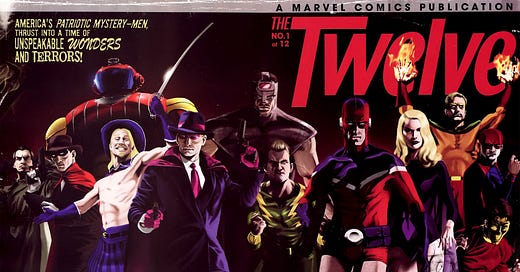


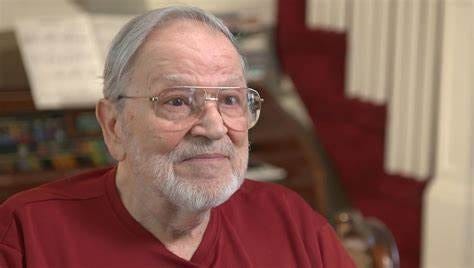

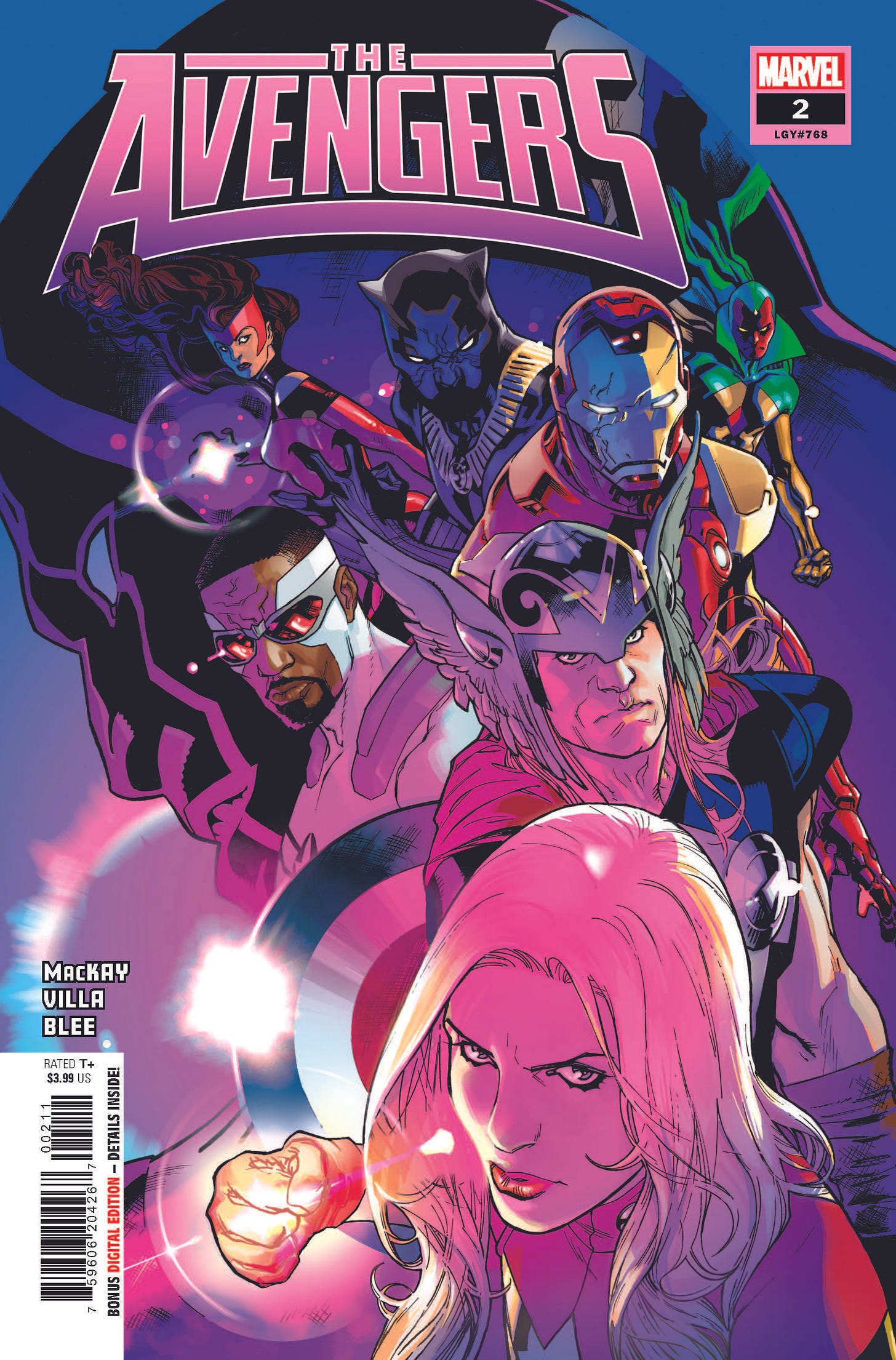
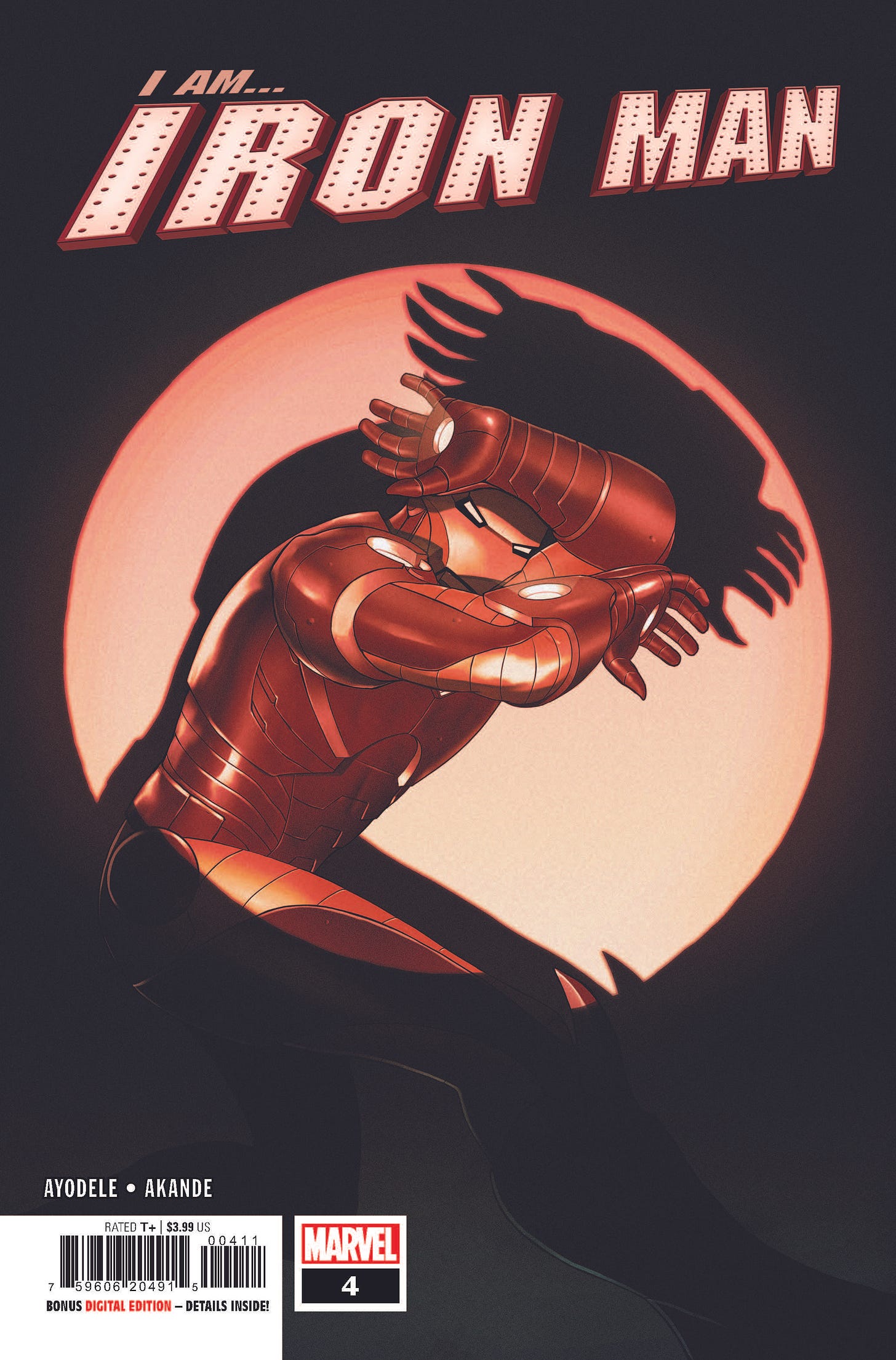
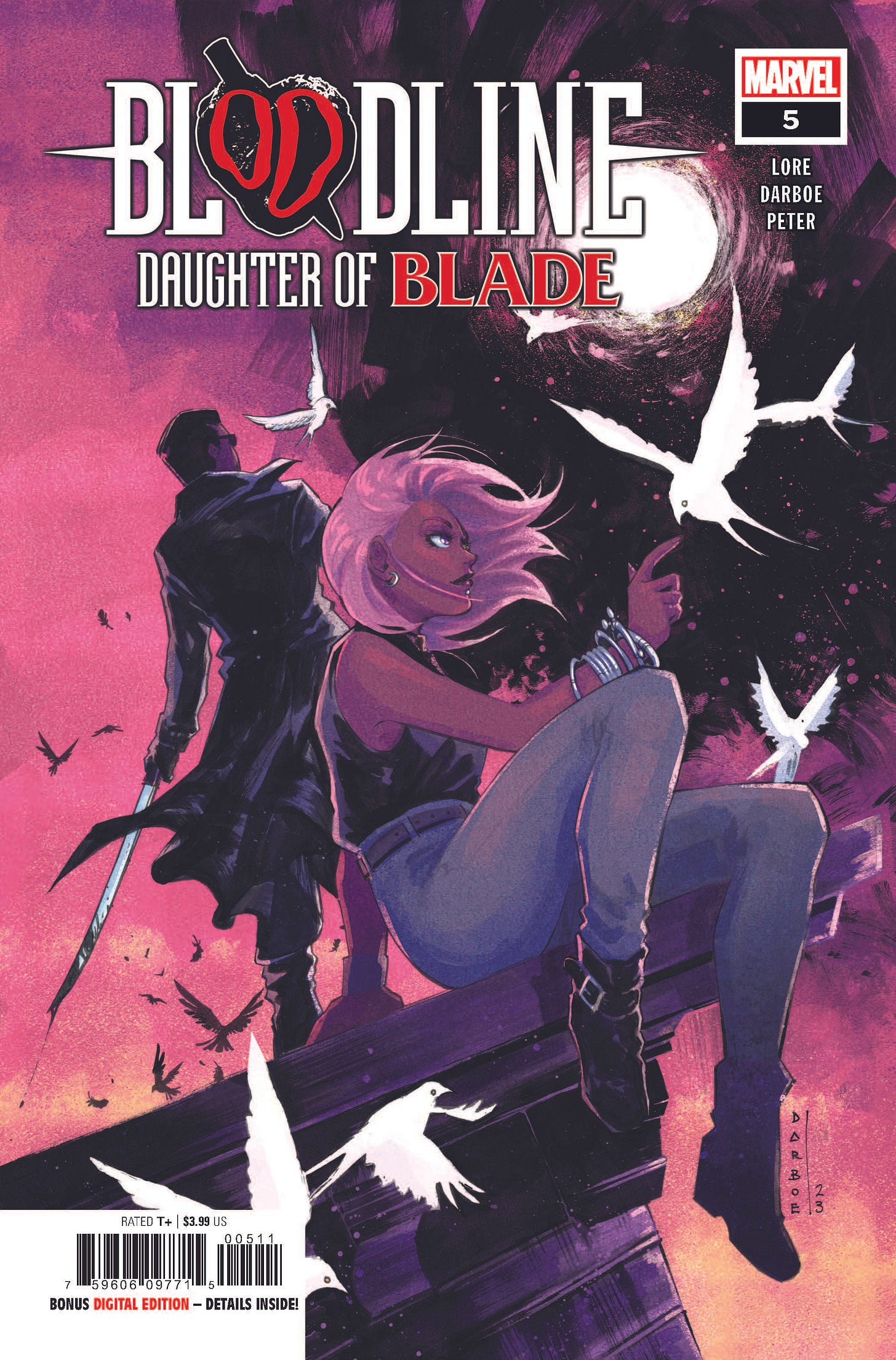
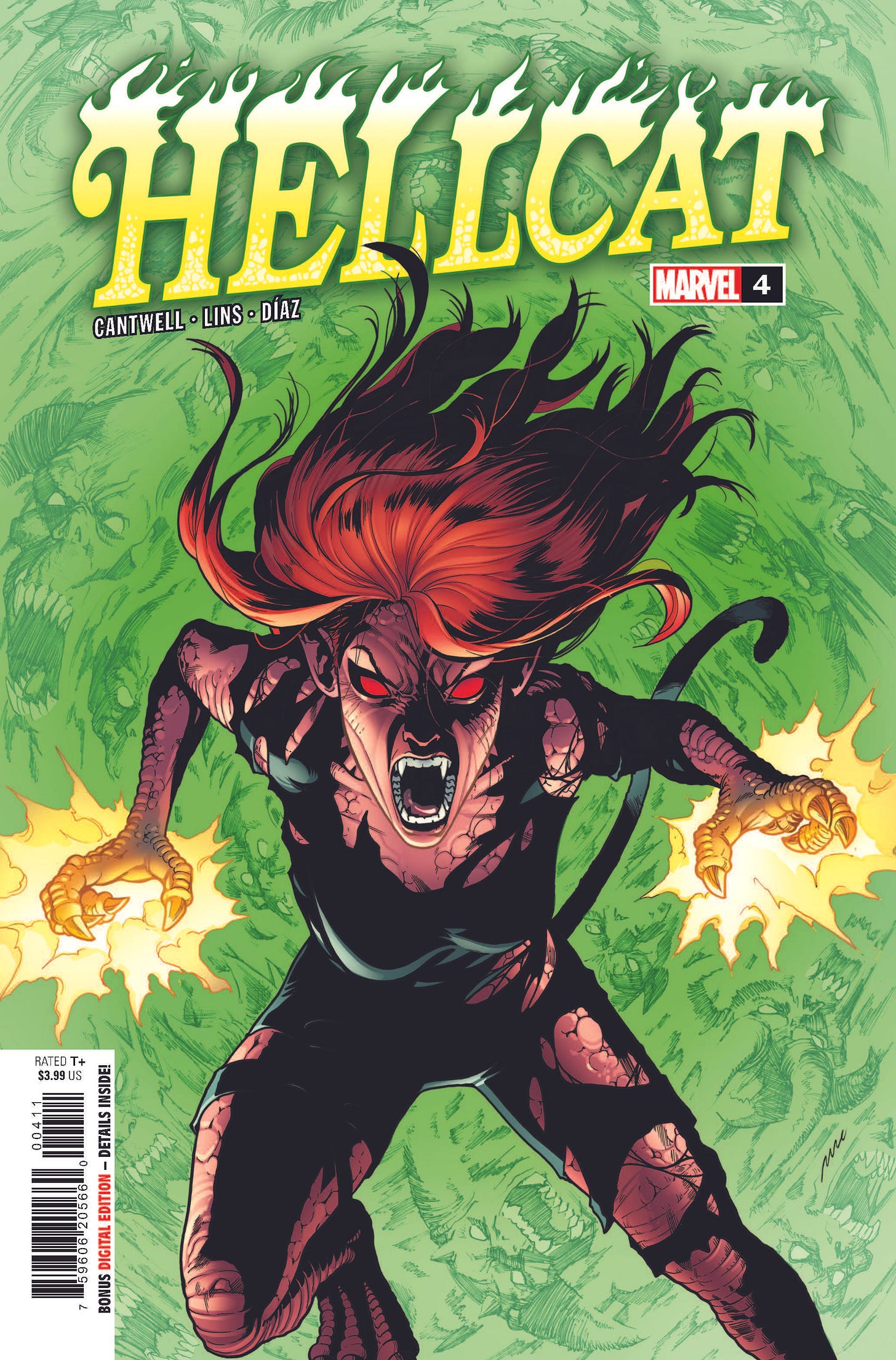

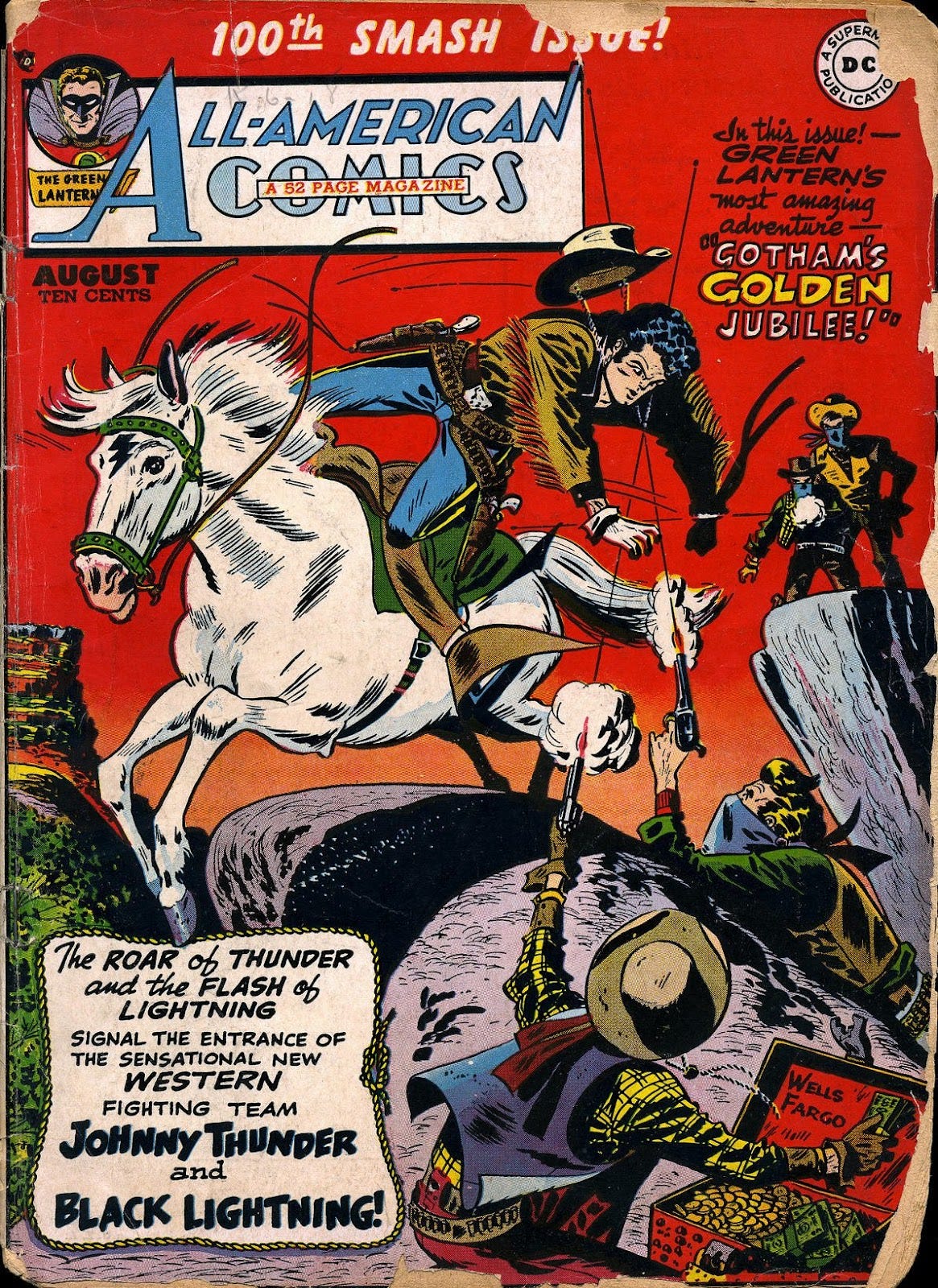
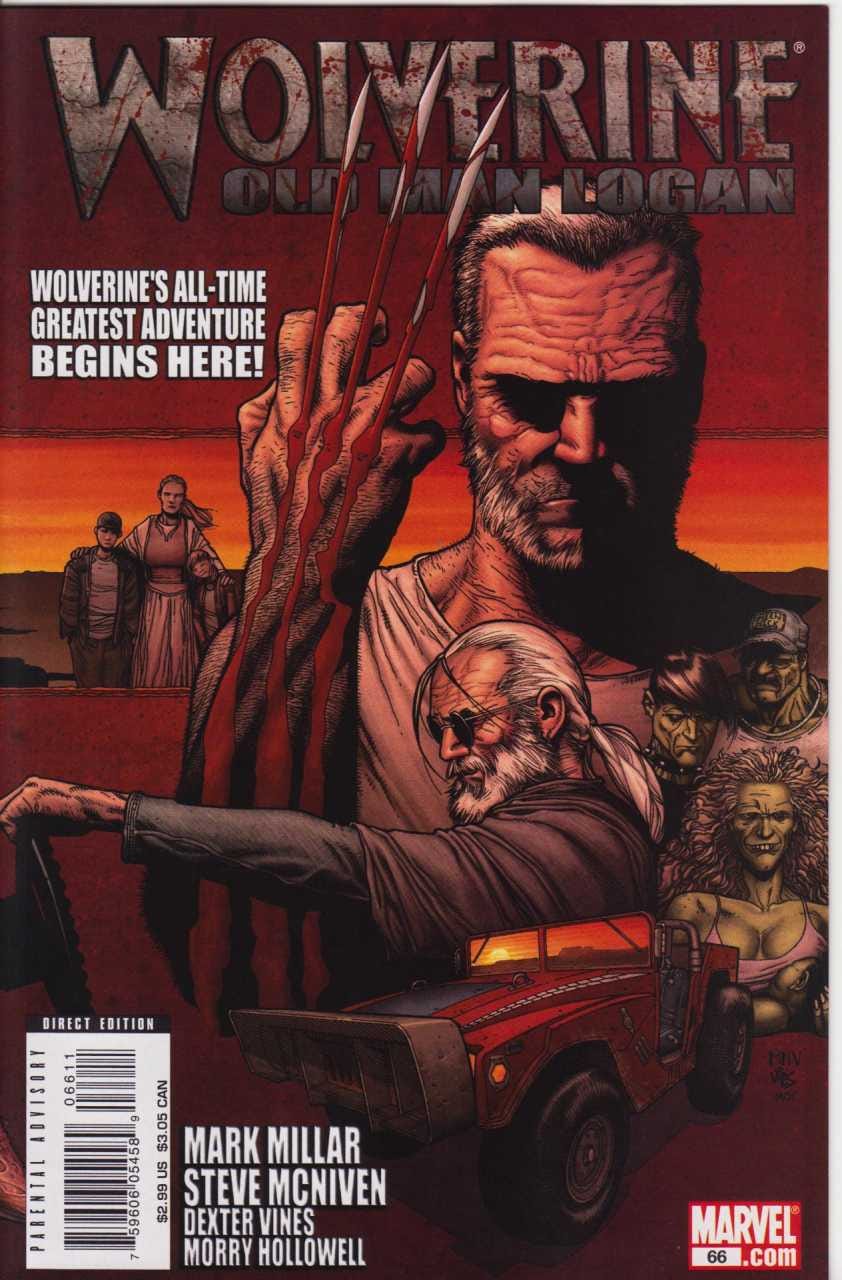
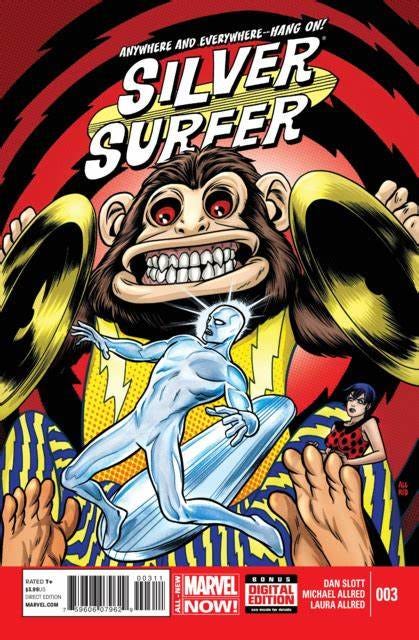
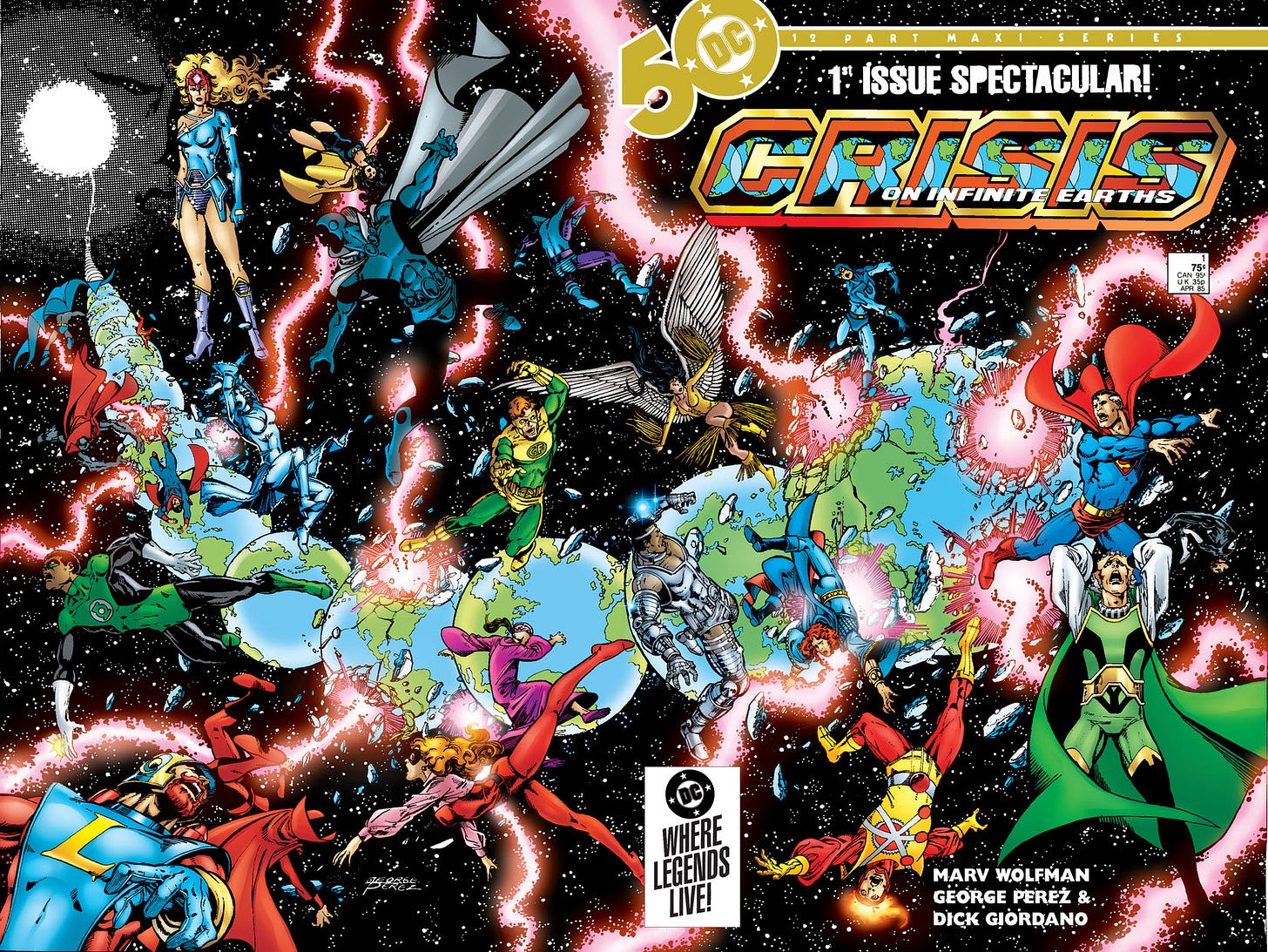
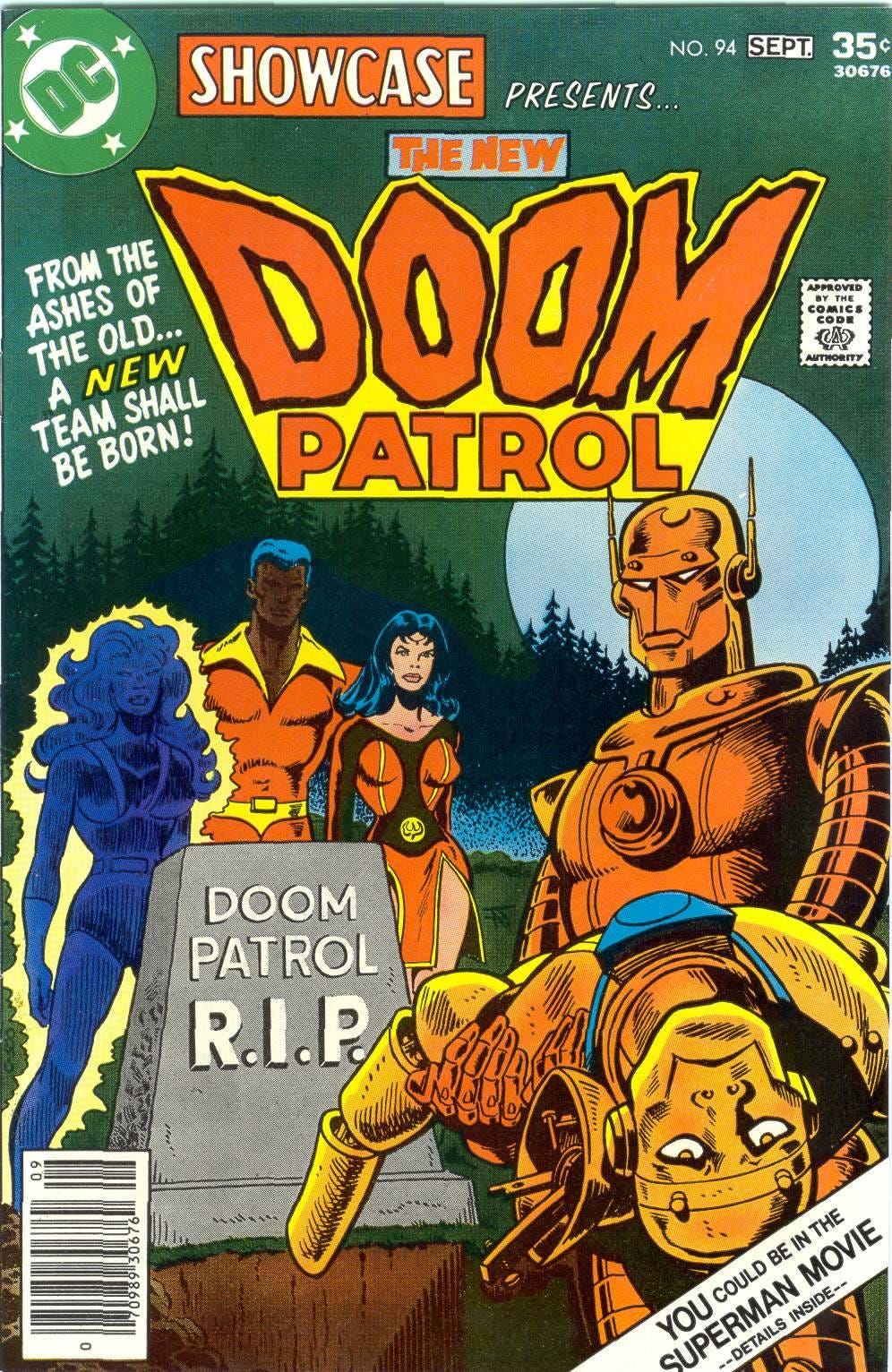
Fun fact about Romita: the first time he drew Spider-Man was in a Daredevil comic (Daredevil #16) — which mirrors the first time Frank Miller drew Daredevil being in a Spider-Man comic (Peter Parker, the Spectacular Spider-Man #27).
I grew up on Romita's Spider-Man as the iconic, platonic ideal of the character, due in no small part to the amount of merchandise I got as a child.
To this day, one of the elements of Spider-Man I am most persnickety about is my strong preference for the Romita eye-shape. There was a lot of subtle — and not so subtle variation in the way that artists drew Spider-Man's eyes. Sometimes they could be little more than teardrops with an outline with little variation of thick and thin. But the line and proportion and shape Romita brought to the inner and outer contours of that eye shape was masterful: the outer bowl, the undulating upper line, the way that the thickness of the black area increased towards the outer point of the eyes, the subtle difference of axis between the inner white and outer black shape. In the years since, I was elated to see Alex Ross paying special attention to capturing that iconic shape, and later still I was thrilled to see Tom Holland's Spider-Mask recreate the shape in its own way — which is one of the reasons I attribute to why this on-screen costume resonated so well. (https://imgur.com/a/8Eg1yLW)
Just one little aspect of why I have such a fondness for Romita's art.
Hey Tom, after reading this, I went back to read The Twelve, and it brought up a question I have for you.
When the Twelve are captured by the Nazis in the siege of Berlin, there is a panel after they’re all unconscious where the head Nazi looks at Claire Voyant/Black Widow and the drawing shows him fondling/groping her breasts. Of course, this might well be what a bad guy would do, but I was wondering how the editing questions or discussions go (or in this case went) about whether it’s a scene that should be shown. Certainly, this is a situation, and the mind doesn’t have to stretch much to find even worse ones, that could happen anytime a hero is captured, female or male. But I suppose the editing question would be, “Does it have to be depicted in the context of telling this particular story?” Looking at that scene, I felt it did not meet that test, and instead was included for exploitive, prurient and/or power fantasy interests only. But that’s me. Were there discussions of that type when editing the book? Is that sort of discussion a common one?
Looking forward to reading your answer. Thanks!